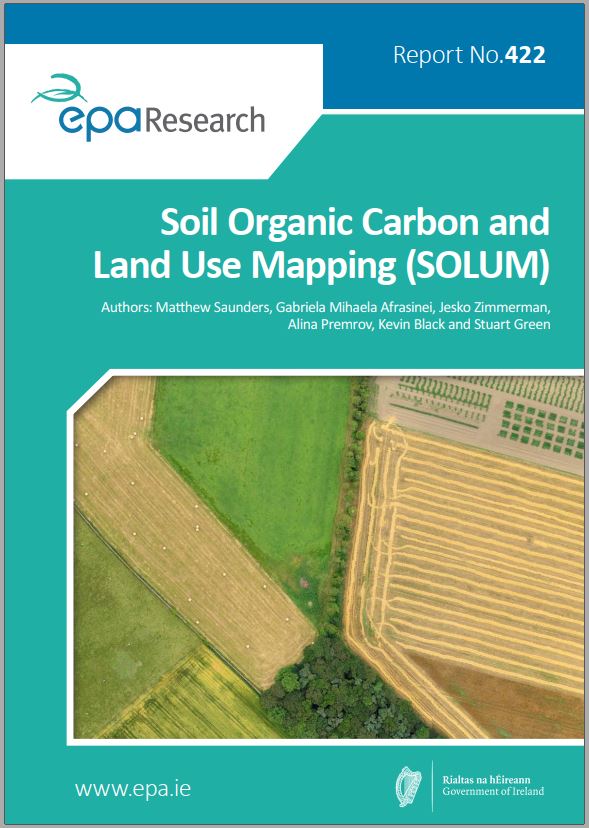Research 422: Soil Organic Carbon and Land Use Mapping (SOLUM)
Authors: Matthew Saunders, Gabriela Mihaela Afrasinei, Jesko Zimmerman, Alina Premrov, Kevin Black and Stuart Green
Summary: Soils contain more than twice the amount of carbon held in the atmosphere, but globally approximately 1600 million tonnes of carbon are lost from the soil each year due to cultivation and land use. This research highlights how large geospatial datasets can provide an excellent source of land use information and can detect land use change events at both national and regional scales. The rule-based land use and soil inventory coupled with the soil cluster approach developed in this work could be implemented in current national land use mapping activities to enhance our ability to assess the impacts of land use and land use change on soil carbon stocks.

Identifying Pressures
Soils contain more than twice the amount of carbon held in the atmosphere, but globally approximately 1600 million tonnes of carbon are lost from the soil each year as a result of cultivation and changes in land use and land management. Understanding the impacts of land use, land use change and forestry (LULUCF) on soil organic carbon (SOC) stocks and greenhouse gas (GHG) emissions is therefore important for national GHG inventory reporting and for mitigating climate change by reducing and offsetting GHG emissions. In Ireland around 65% of land area is devoted to agriculture, with 84% of that used for grass-based production systems. However, land parcels regularly shift between cropland and grassland systems, which may influence their carbon and GHG dynamics. The aim of this work was to develop a spatially integrated soils and land use dataset for Ireland that could provide:
- robust estimates of reference SOC stocks and potential changes;
- an understanding of the influence of land use, land management and climate on SOC stocks and GHG dynamics;
- the capability to inform tier-based reporting activities and land-based climate change mitigation methodologies.
Informing Policy
Under the EU Effort Sharing Regulation, Ireland has a target to reduce GHG emissions 30% by 2030 relative to 2005 emissions. However, Ireland has a greater ambition to reduce its emissions by 51% compared with 2018 levels. Ireland’s agricultural sector is one of the largest emitting sectors, at 37% of Ireland’s total emissions in 2020. Therefore, it is a key area where reductions are needed and where significant opportunities for land-based climate change mitigation options exist. The reporting mechanisms currently used to compile emissions from agricultural land use, and the models used to predict future change, can be improved by increasing the availability of soil property and agricultural activity data at higher resolutions in space and time. This will provide a platform from which reference SOC stocks can be derived. It will also improve our understanding of the drivers of SOC changes and allow us to develop and implement suitable carbon-neutral land management options.
Developing Solutions
Changes in land cover and land use are important processes that directly influence the amount of carbon held in terrestrial ecosystems. It is crucial that we better understand how these carbon stocks change over time, particularly in relation to the LULUCF sector. This research highlights how large geospatial datasets can provide an excellent source of land use information and can detect land use change events at both national and regional scales. These datasets can also be used with associated spatial databases of soil cover across the EU, which contain soil attributes such as organic carbon and particle size distribution and can be used to link land management with changes in SOC stocks. This work also highlighted contrasting trends between tier 1 and 2 estimates of SOC stock changes associated with the LULUCF sector. The findings could be further developed by implementing the rule-based land use and soil inventory with the soil cluster approach in current national land use mapping activities.
https://www.epa.ie/media/epa-2020/research/epa-funded-research/Report-cover-422.jpg